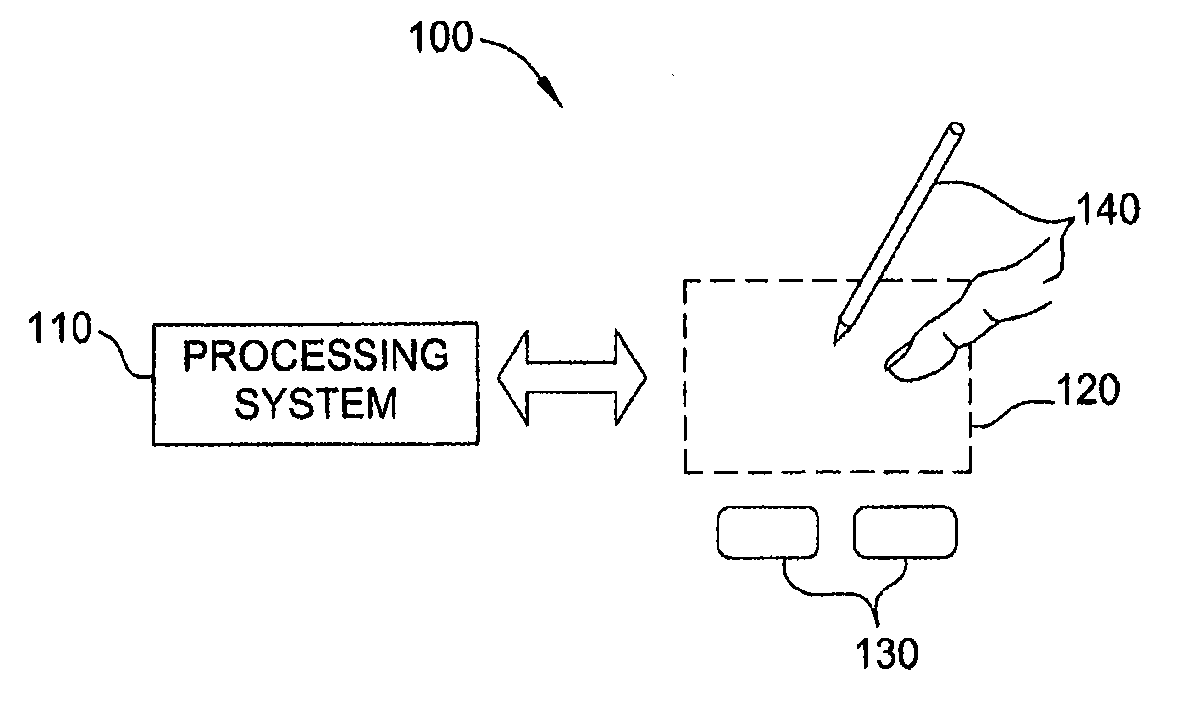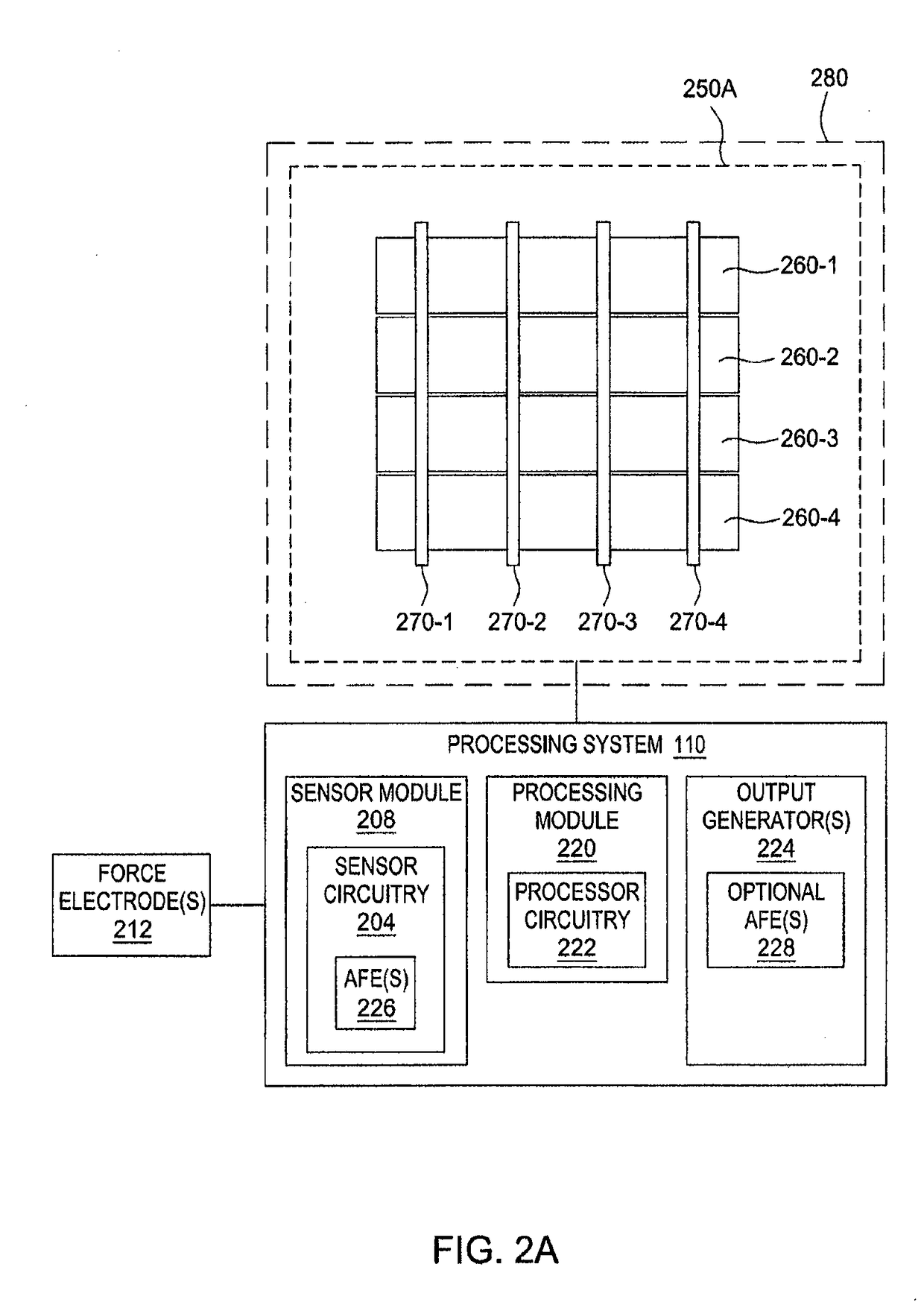Differential force and touch sensing
a technology of touch and force, applied in the field of capacitive sensing, can solve the problems of less space available for other components, add to the thickness and/or size of touch and/or force sensing components, and increase so as to increase the accuracy of correlation and reduce the latency of reporting
- Summary
- Abstract
- Description
- Claims
- Application Information
AI Technical Summary
Benefits of technology
Problems solved by technology
Method used
Image
Examples
example simultaneous
Touch and Force Sensing Using in-Phase Quadrature Demodulation
[0090]Typically, the touch signal (e.g., the finger signal) is detected by measuring the background capacitance and filtering it to estimate a baseline, and subtracting the baseline capacitance from all subsequent measurements to get the “future” finger signals. According to the techniques provided herein, the background capacitance may be measured simultaneously and independently with the finger signal.
[0091]FIG. 7 is a block diagram depicting a simplified cross-section of an input device 700 showing driving the sensor and force electrodes with a modulated sensing signal to acquire touch-to-sensor capacitive coupling and background capacitance, according to an aspect. As shown in FIG. 7, the baseline or background capacitance, Cb, carries deflection information (e.g., due to force of touch) between the touch sensor electrodes 714 and the display chassis / ground 712. Cb is an additive quantity to the touch-to-sensor coupli...
PUM
 Login to View More
Login to View More Abstract
Description
Claims
Application Information
 Login to View More
Login to View More - R&D
- Intellectual Property
- Life Sciences
- Materials
- Tech Scout
- Unparalleled Data Quality
- Higher Quality Content
- 60% Fewer Hallucinations
Browse by: Latest US Patents, China's latest patents, Technical Efficacy Thesaurus, Application Domain, Technology Topic, Popular Technical Reports.
© 2025 PatSnap. All rights reserved.Legal|Privacy policy|Modern Slavery Act Transparency Statement|Sitemap|About US| Contact US: help@patsnap.com



